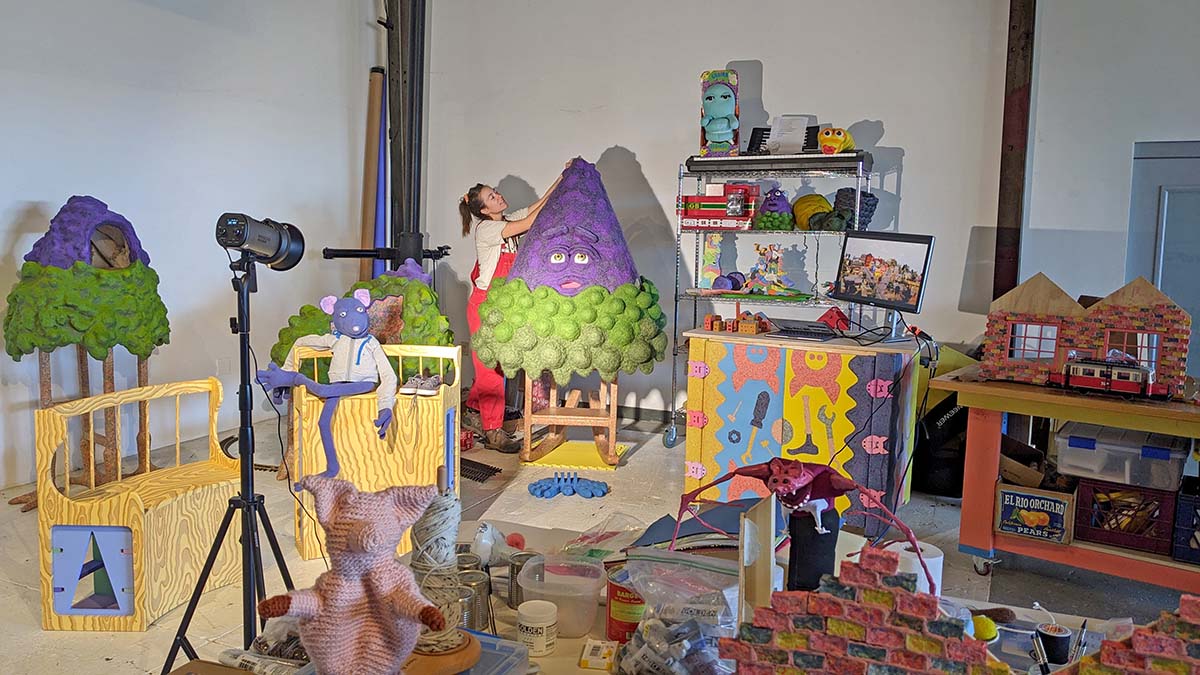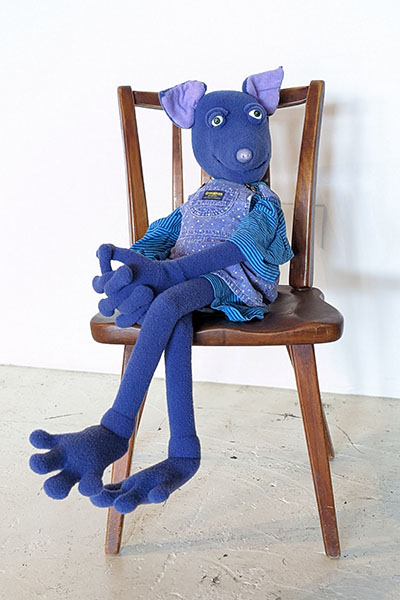School of Art
How to Get to Make Believe
A Mister Rogers-Inspired Exhibition Examines the Blurred Line Between “Real” and “Make Believe” in Today’s World
written by
Andy Ptaschinksi
In the children’s show "Mister Rogers’ Neighborhood," a trolley takes viewers from the “real world” to the Neighborhood of Make-Believe, creating a clear distinction between what is “real” and what is “made up.” But what happens when the distinction between real and imagined is blurred? In an era of artificial intelligence, misinformation and conspiracy theories, School of Art Professor Isla Hansen is creating her own take on the iconic show, updating its premise with both new aesthetics and new lessons, in an installation at the Mattress Factory Museum in Pittsburgh.
The exhibition, titled “How to Get to Make Believe,” will also serve as a set and studio for the creation of a limited episode television series. The show will be on view in the museum’s Monterey Annex from March 2024 through March 2025.

Hansen’s installation will recreate an apartment (“reality”) and a fantasy play land (“imaginary”) with a miniature electric trolley running between the two. Sculptures in the installation will include set pieces, puppet theaters and miniature models, all with underlying structures and forms referential to furniture, alluding to the Monterey Annex’s history as an apartment and the permanent Allan Wexler piece on the second floor. Hansen’s pieces will be made with wood, paper clay, fabric and a variety of other media that refer to familiar childhood craft materials, referencing play and making in a domestic setting.
“How to Get to Make Believe” is an extension of Hansen’s continuing interdisciplinary practice looking at the role of play. She recently completed “The Play Object Project,” a collaborative research project studying, making and supporting new forms of play for all ages, through CMU’s Center for the Arts in Society. The project included workshops at CMU’s Children’s School, an interdisciplinary course titled “Objects of Play,” and supported multiple Pittsburgh-based artists projects that involved creating playful experiences and objects.
For Hansen, one of the biggest strengths of "Mister Rogers’ Neighborhood" was its ability to confront serious topics in a simplified way, making them accessible for children. Accessible conversation about contemporary issues not only benefits children, says Hansen, it can benefit everyone. I’m interested in the question of “what it means to make contemporary art be for all audiences.”

Hansen aims to focus on topics affecting Pittsburgh, such as climate change and the rise of new technologies, including artificial intelligence. Her host, a purple fuzzy puppet named Ratlet, will film segments talking with experts in various locations in a reference to "Mister Rogers’ Neighborhood." Experts include both artists and non-artists, allowing an examination of issues from multiple vantage points.
Although the topics she selects may be controversial, she’s hoping that the children’s format provides a way to talk about difficult topics in a more nuanced and complex way than the polarizing formats of social media or cable news.
“The practice of play and creativity helps make connections between the 'not real' and the 'real.' This provides a way to talk about what we think 'real' means and what is 'make believe,' and to understand the impact that made beliefs have on reality.”
Isla Hansen
Assistant Professor, School of Art

featuring the following:
work by Isla Hansen
Hansen's work is supported by:
the Mattress Factory Museum, The Heinz Endowments Creative Development Awards, Carnegie Mellon University College of Fine Arts Fund for Research and Creativity, the Fred Rogers Institute, the Dedalus Foundation Fund for Past Fellows and Awardees